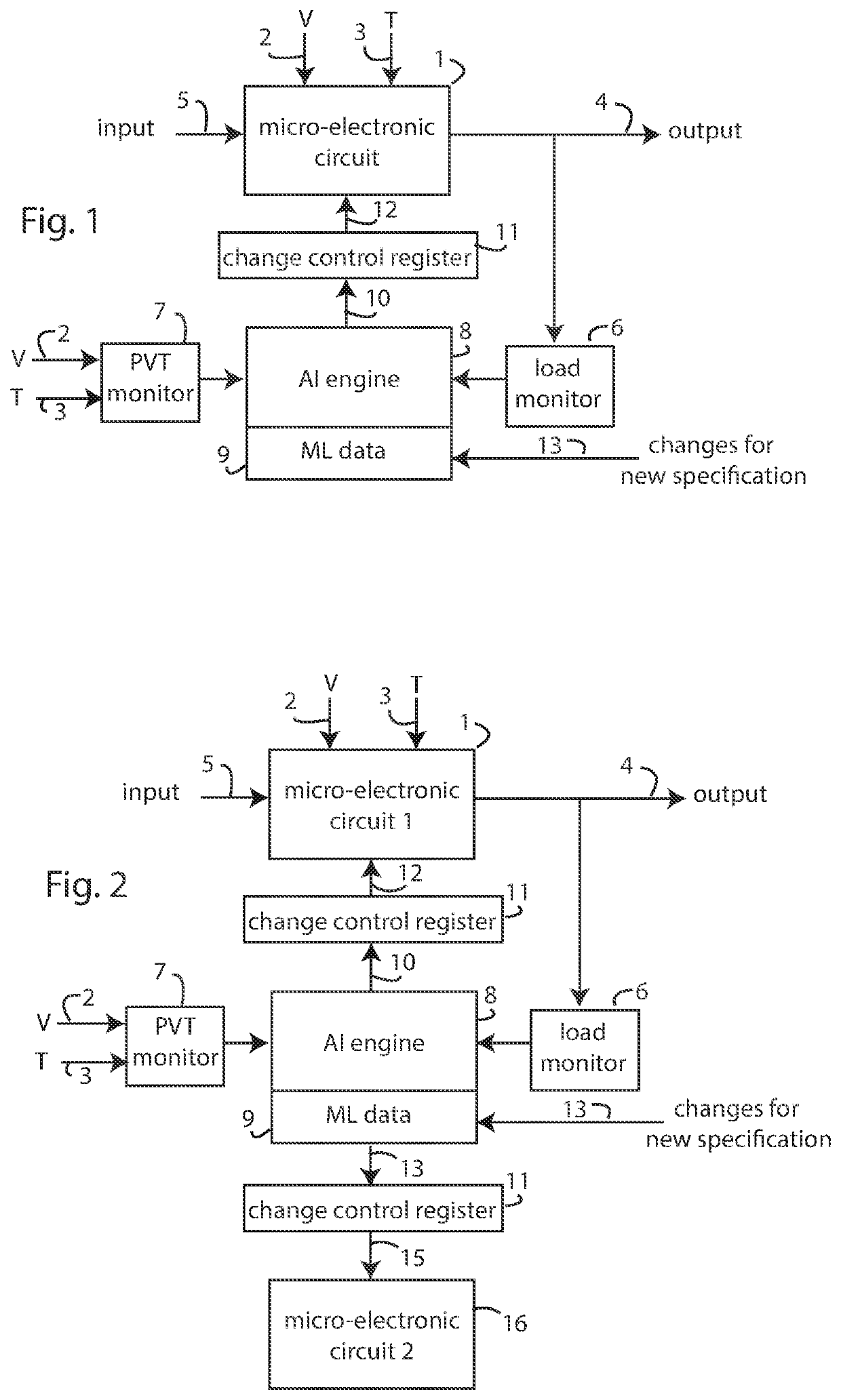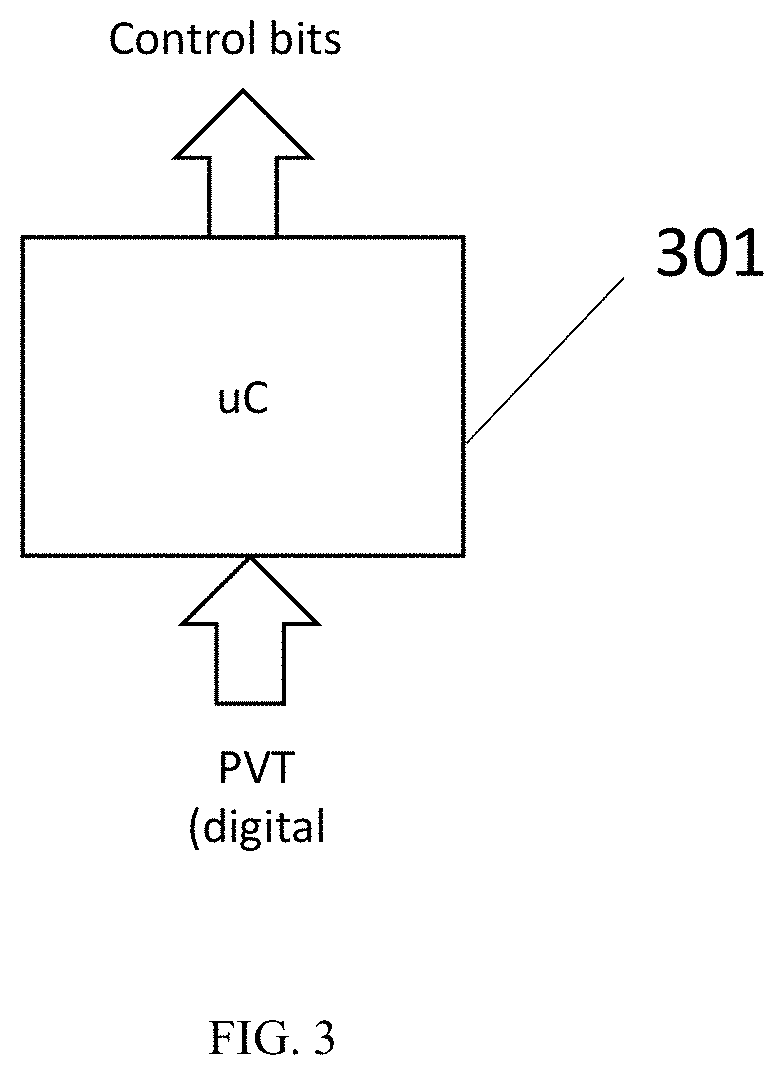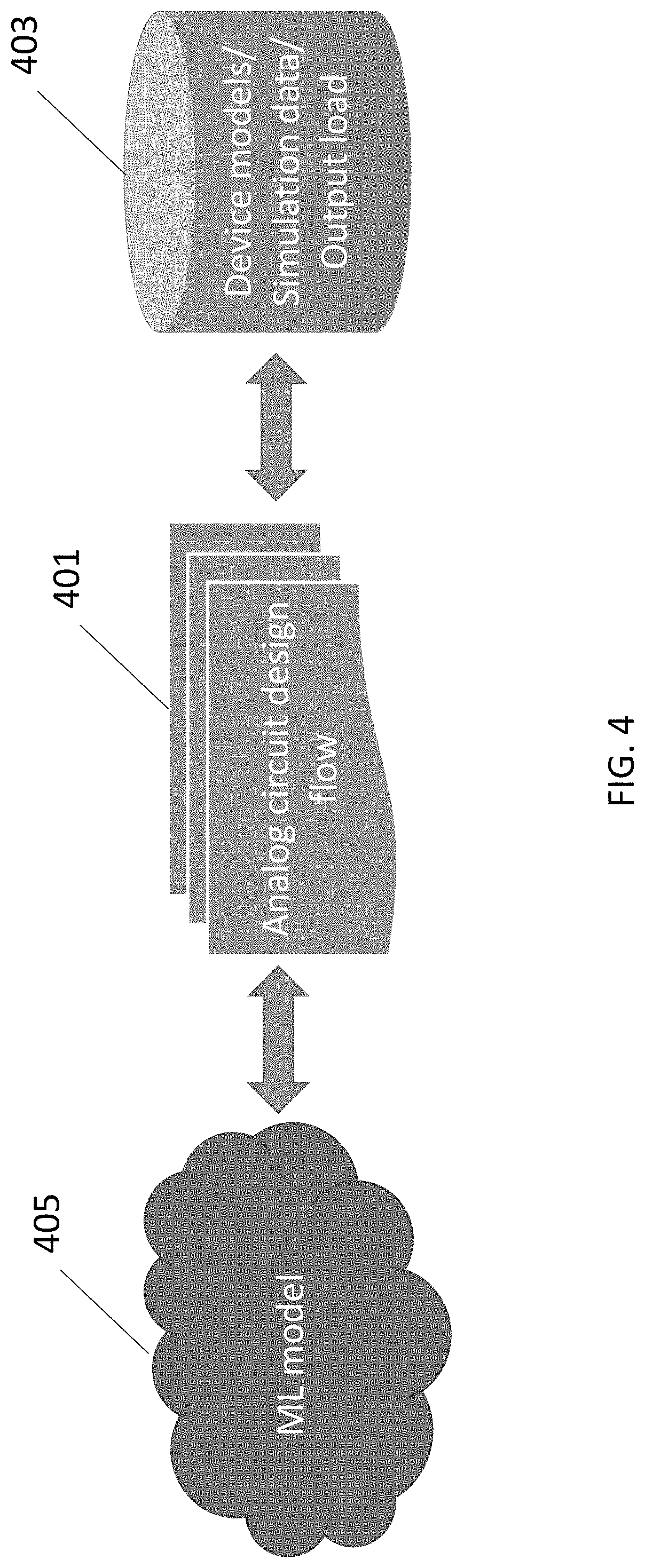AI-driven self adapting microelectronic circuits
a microelectronic circuit and self-adaptive technology, applied in the field of artificial intelligence, can solve the problems of unnecessarily large, hotter, more complex, less optimal microelectronic circuits that fail, waste of power and performance, and waste of spa
- Summary
- Abstract
- Description
- Claims
- Application Information
AI Technical Summary
Benefits of technology
Problems solved by technology
Method used
Image
Examples
Embodiment Construction
[0062]In general, the present description is a method based on artificial intelligence to implement a wide range of microelectronic circuits that can adapt by themselves to the usage conditions (e.g. loading changes), manufacturing variances or defects (e.g. process variations, device parameter mismatches, device model inaccuracies or changes, etc.) as well as environmental conditions (e.g. voltage, temperature) in order to negate all or part of their effects on the circuit performance characteristics and achieve a very tight set of specifications over the wide range of conditions.
[0063]The system includes (see FIG. 1) a Microelectronic Circuit 1, a Load Monitor 6, a PVT monitor 7, an AI engine 8 with stored machine learning data 9 and a Change Control Register 11. In some implementations, the Load Monitor is not present.
[0064]The Microelectronic Circuit 1 is designed to function and provides certain outputs 4 within a certain range of the usage conditions (e.g. loading, interferenc...
PUM
 Login to View More
Login to View More Abstract
Description
Claims
Application Information
 Login to View More
Login to View More - R&D
- Intellectual Property
- Life Sciences
- Materials
- Tech Scout
- Unparalleled Data Quality
- Higher Quality Content
- 60% Fewer Hallucinations
Browse by: Latest US Patents, China's latest patents, Technical Efficacy Thesaurus, Application Domain, Technology Topic, Popular Technical Reports.
© 2025 PatSnap. All rights reserved.Legal|Privacy policy|Modern Slavery Act Transparency Statement|Sitemap|About US| Contact US: help@patsnap.com



